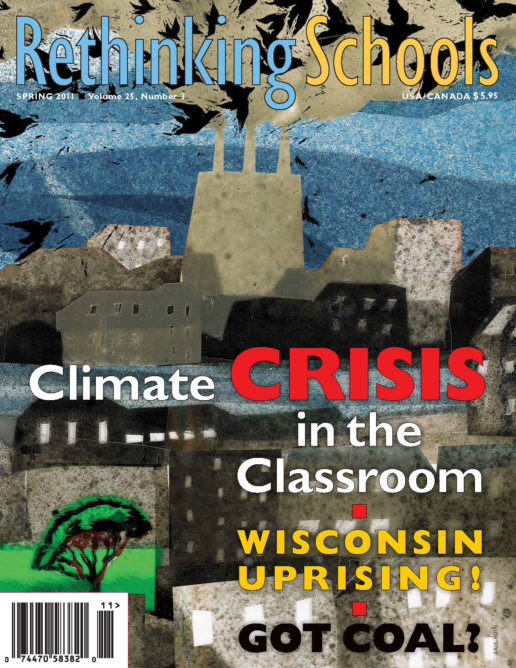Preview of Article:
Talking Back to the World
Turning poetic lines into visual poetry
Illustrator: Roxanna Bikadoroff
I am not a visual artist. At best, I can draw a heart. But it stops there. Even my stick figures could use improvement. So when my middle school students asked me if they could do an art project, I quickly made an excuse. “We don’t have time. It’s not a part of the unit.”
It was partly true. I had planned out a four-week poetry unit on exploring identity. Besides teaching students the basics—What is a stanza? Why do poets break lines?—I also had to find the best poems to spark my students’ interests and get them motivated to talk and write about who they are, where they are from.
At the start of our after-school program, the teachers decided our goals would include teaching students how to connect poetry to their living histories and how to use poetry as a means to talk back to the world. My 90-minute lesson plans were bursting with free writes, reading and critiquing poems, writing poems, revising poems, performing poems—there was no room for art. Especially not the simplistic assignment I have done in times past: “Choose an image from your poem and illustrate it.” If students were going to make illustrations, I wanted these to have meaning and tie into our unit.
It wasn’t until our fourth lesson that I thought of a way to incorporate art into our poetry class. Students had written poems about what raised them (see “‘Raised by Women’: Celebrating Our Homes,” Christensen), and they had written a response to the free-write question “If people could see the true me, what would they see?” We spent two sessions writing about and discussing our roots. I learned that my Bronx students carried in them the turquoise blue water of Jamaica, the sweet mangos of the Dominican Republic, and the steaming hot café con leche of Puerto Rico. They were raised by video games and praying grandmothers, by leftovers that taste better on the second day and empty pockets, with not even lint or change. In Ode to My Skin Tone, Richard wrote:
I am Sunset Beige, the color of the beach
the color of Spanish tongues

